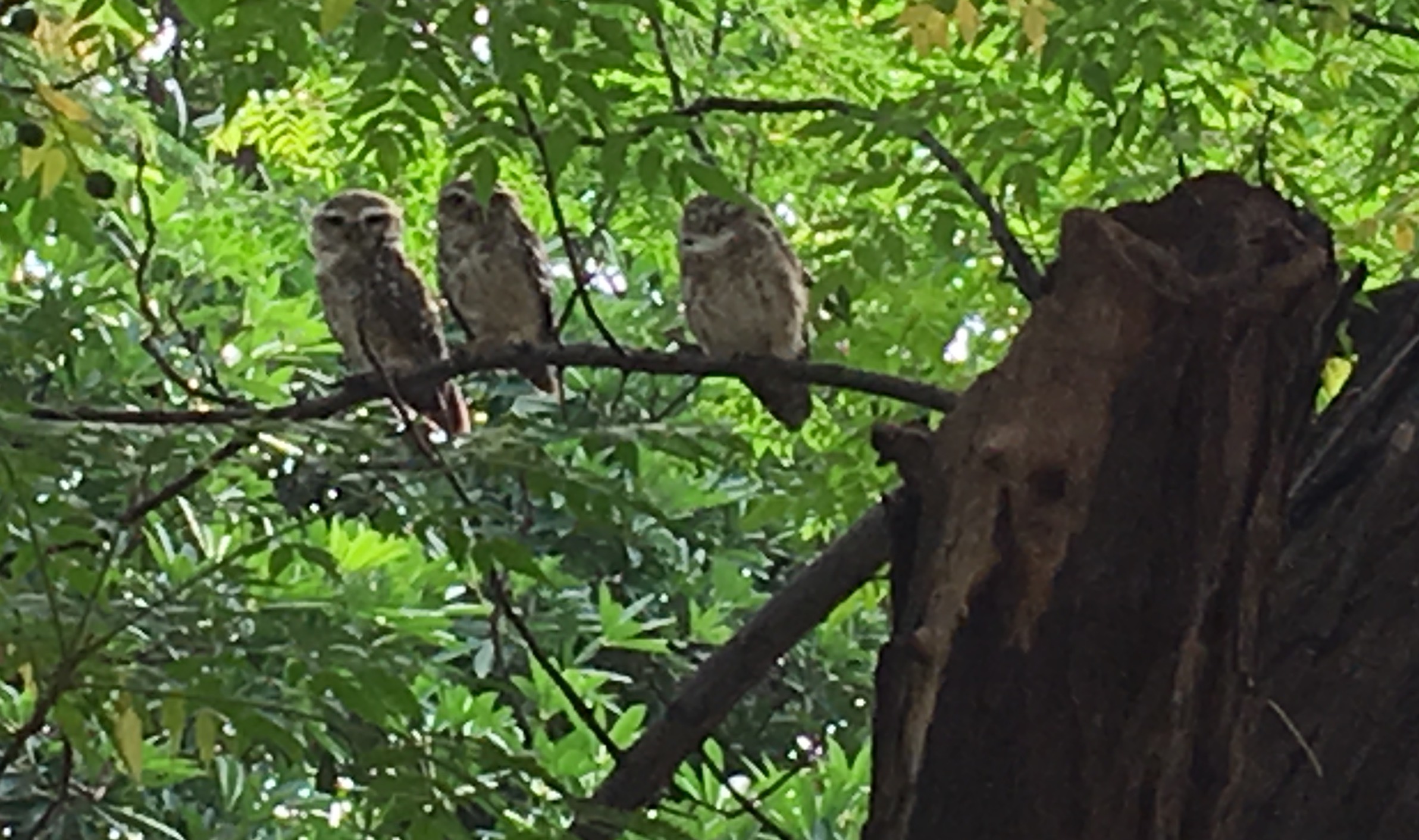We shifted to a new house in Delhi, in March 2010, and there, right in front of the house was a beautiful Persian Lilac (Melia azedarach) tree in full bloom.

Persian Lilac (Melia azedarach)
The stem and branches with dark fissured bark bore small clusters of lilac-coloured flowers interspersed with new green leaves and clusters of brown berries from the earlier season. Every time I stepped out of the house, the gently swaying foliage of the tree would greet me. Slowly, new berries formed and hung from the branches in clusters and the old ones dropped off.

A pair of Spotted Owlets seen in April 2019
Then one day in March 2012, I suddenly noticed a pair of spotted owlets near some hollows in the tree trunk. I saw them on and off from early morning to evening sitting on the tree. It was a little surprising to see owls active during the day. That year, I did not see them after July. But I spotted them again next year (2013) on a cold January day, sunning themselves on a branch of the tree. The tree had shed all its leaves and was almost bare. Intrigued, I kept a watch on them for the next six years. The pair (I suppose it is the same pair) returned every year to the tree without fail. They nested in the month of March and the baby owlets could be seen from May onwards. By September the baby owlets are full grown adults. For the first two years, the same hollow was used for nesting but unfortunately, in the later years, the parent owlets had to look for new nesting sites on the tree as the earlier ones, especially those on branches, were destroyed by either natural falling or lopping off of branches by people collecting firewood. That is when I realised the significance of rules restricting the collection of firewood by not only cutting but also lopping trees from forested areas.

Three Owlets seen in September 2019
Over the years, I found that the tree was host not only to the owlets but also to other hole-nesters such as parakeets/parrots and mynas. The parrots/parakeets were the first to occupy the hollows in the tree and begin to nest in them in the month of January. The baby parrots probably leave the tree by March/April. Then the mynas occupy the hollows, interestingly, often the same ones that parrots lived in and nest for the next three or four months. Indeed, it is incredible that a single tree supports so many bird families year after year.


The tree with Parakeet and Myna visitors
All photos by P. Chitralekha.
About the Author – P. Chitralekha is a retired Professor who taught botany for 30 years to undergraduate students of Dyal Singh College (affiliated to the University of Delhi), Lodhi Road, New Delhi. She studied B.Sc. and M.Sc. courses from Miranda House, University of Delhi, and was awarded M.Phil. and Ph.D. degrees from the Department of Botany, University of Delhi. She is interested in all aspects of plant science.





